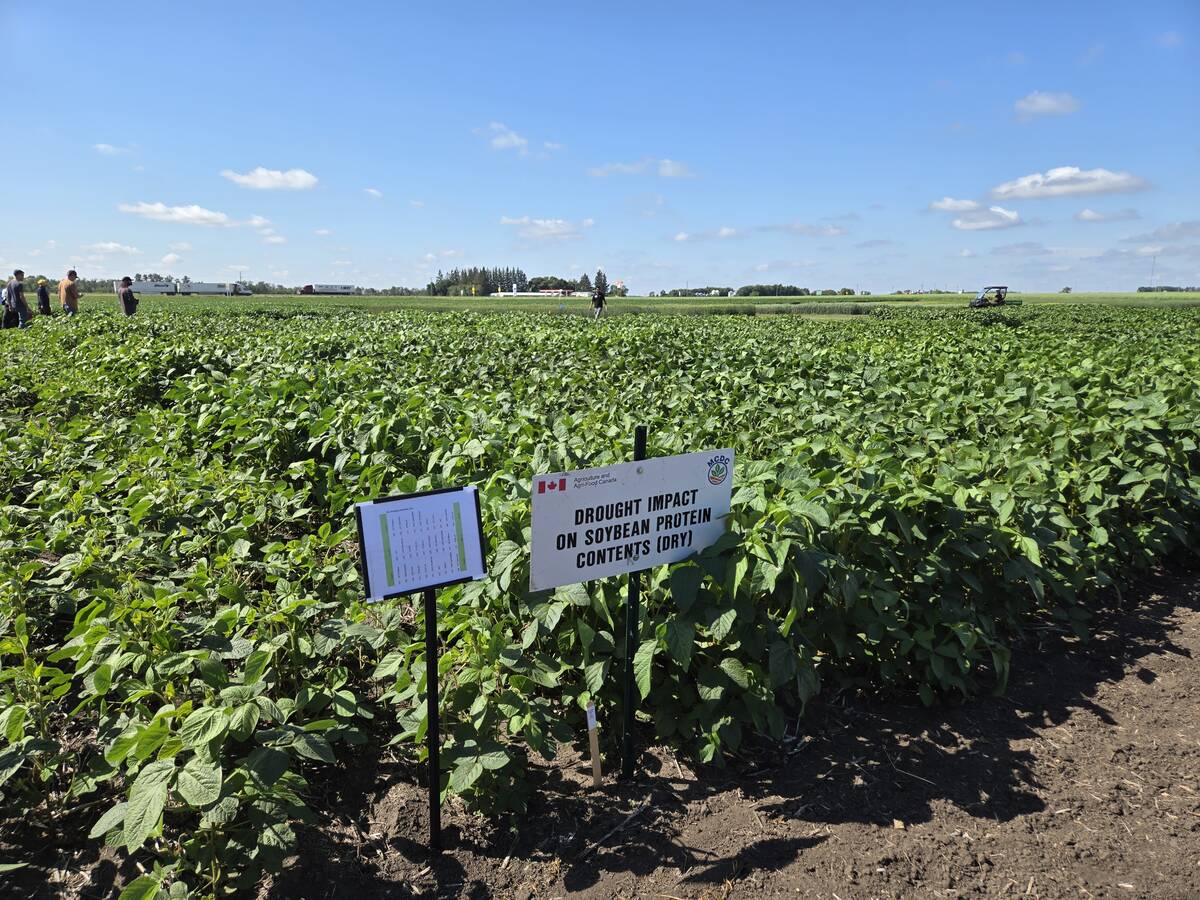The more than $96 million in funding will bring high-speed internet to 46 rural and remote communities in the province
There is no single silver bullet that will bring high-speed internet to Alberta producers who will need it to adopt next-generation technologies, says a provincial cabinet minister.
“We want to make sure that our farmers in Alberta are successful and able to meet the needs of Canadians, but also folks all around the world in terms of food security,” said Minister of Technology and Innovation Nate Glubish. “And we’re going to keep working hard to make sure that we’re making advances every single day and improving connectivity.”
Read Also

Carberry field day looks for agriculture solutions
Manitoba farmers explored research solutions for resilient crops, perpetual agronomic issues and new kinds of agricultural products at a field day at the Manitoba Crop Diversification Centre in Carberry on Aug. 6.
More than $96 million in broadband funding by the federal and Alberta governments was recently announced at a news conference in Vulcan, Alta. It included mayor Tom Grant, Glubish and federal Minister of Rural Economic Development Gudie Hutchings.
The funding is expected to bring high-speed internet to 46 rural and remote communities, as well as more than 2,000 Indigenous households across the province, said a federal statement. As the latest allocation under previously announced total funding of up to $780 million for rural broadband in Alberta, it is expected to connect more than 10,000 homes through 14 projects.
“High-speed internet is no longer a luxury anymore, it is a necessity,” said Glubish.
The announcement July 11 followed an initial allocation of up to $70.6 million that was unveiled last year. It involved more than 50 rural and Indigenous communities totalling more than 10,400 households.
Glubish said the focus is to connect every Albertan and business in the province regardless of where they live, “and we know that in some cases that is going to bring connectivity to farm properties.”
Other producers, particularly in the most remote areas of Alberta, will likely need to access broadband through services such as Starlink, provided through low Earth orbit satellites, he said.
“I don’t think there’s any one silver bullet that’s going to tackle this. I think it’s going to be a mix of some of the infrastructures that our partnership with the federal government is going to continue building out into every corner of the province….”
The Alberta Broadband Strategy commits provincial officials to achieve broadband connectivity for everyone in the province by the end of the fiscal year 2026-27.
The initiative comes as farmers begin a technological shift that will depend on high-speed internet, said Glubish.
“(There will be) way more sensors so that you can track exactly what you’re doing on every sq. inch of your soil, integrating data from weather maps and sources so that you can have very precise understanding of how much rain has fallen on your farmland, knowing exactly how much fertilizer to put per sq. inch instead of just having averages,” he said.
“And by doing so, we know that farmers will be able to drastically increase their productivity, and in this day and age, when food security on a global scale is so important, it just underscores the fact that connected farmland is going to be really important.”
Communities under the latest broadband funding allocation include Brant, Bluffton, Carmangay, Cayley, Champion, Deadwood, Dixonville, Enilda, Ensign, Fort Vermilion, Gift Lake, Gull Lake South, Heart River, Hawk Hills, Herronton, High Level, Joussard, Kirkcaldy, Kinuso, La Crete, Lake McGregor Country Estates, Little Bow Resort, Milo, Moon River Estates, Mossleigh, North Star, Notikewin, Queenstown, Rainbow Lake, Red Earth Creek, Rimbey, Salt Prairie, Sunset House, Travers, Viewmar Estates, Vulcan, and Wabasca-Desmarais.
They also include Assumption (Dene Tha’), Big Horn 144A, Brocket (Piikani Nation), Heart Lake 167, Loon Lake 235 (Loon River Cree First Nation), Standoff (Blood), and Tall Cree 173, along with Tall Cree 173A and Fort Vermilion 173B (both Tallcree Tribal Government).
Construction has started in 26 communities, including Vulcan, with 21 of these under the first funding allocation.
Supply chain issues caused by the COVID-19 pandemic continue to hamper the economy despite some improvements, said Glubish. Fibre optics equipment needed for broadband is no different, which has played a role in getting certain projects ready, he said.
Although the supply chain has been an issue for some projects, it hasn’t brought everything to a standstill, said federal minister Hutchings. The federal government is well underway to meeting its target of 98 percent of Canadians connected to broadband by 2026, she said.
















